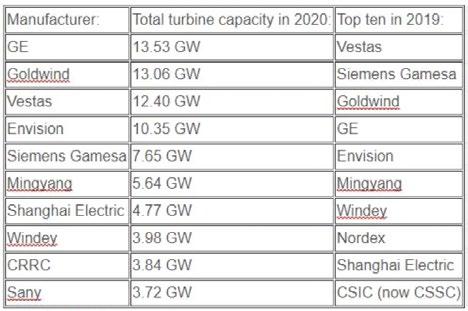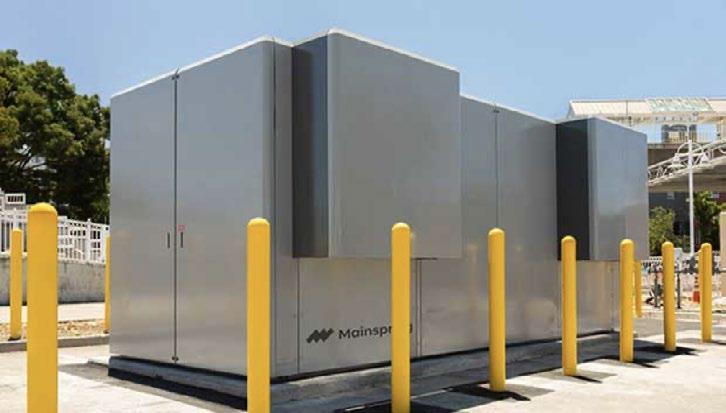
8 minute read
Milestone
Adani Greens Kamuthi Project Turns Water Positive, Signals The Future for Large Projects
The announcement of the groups most prestigious and early large project turning water positive will set a benchmark for almost all future projects to follow
Advertisement
Adani Green Energy's 648 megawatt Kamuthi Solar plant in Tamil Nadu, has been declared the first of its scale to be water positive. The announcement is a welcome step by large developers to set a benchmark for the broader industry to emulate . AGEL — the world’s largest solar power developer by total projects — has a portfolio of over 14,815 MW of projects at various stages of development.
Independent global assessment and certification agency DNV has issued the certification following an audit conducted on the plant’s water management in 2020-21.
Being water positive signifies that the project is conserving more water that that consumed to operate the solar plant. As one of the worlds largest single location solar plants, the Kamuthi project is spread over 2500 acres, and is located in a relatively dry part of the state of Tamil Nadu.
According to the DNV certification, the plant created a water credit of 52,982 m3 (cubic metre) which is more than its water consumption for the year 2020-21. The company became water positive bydesilting of community ponds and development of additional rainwater harvesting potential in the neighbouring villages of Sengappadai, Pudukottai and Thathakulam.
“This initiative has resulted in substantial increase in the storage capacity of water bodies. Besides the intervention on the grounds, we also introduced robotic solar modules cleaning technology to reduce water usage to a significant extent,” said an AGEL spokesperson. AGEL is aiming to be in the top 10 companies of the world in ESG Benchmarking of Electric Utility Companies by 2022.
These measures were introduced in addition to a robust water conservation framework already in practice at the site. According to this framework, the company optimised its water requirement under ISO 14001, through various initiatives including robotic cleaning of solar panels, rainwater harvesting and use of drips among others.
For large utility solar parks, the search for high irradiance and clear area frequently leads to locations in dry landscapes, and water use had been flagged a major challenge very early on. With cleaning technologies evolving to become waterless, the next stage in the evolution is to actually support water conservation by ensuring the right practices, be it water harvesting or supporting surrounding areas with conservation and access. Massive planned parks like the 41 GW Kutch project have already drawn protests regarding their environmental impact. Firms will need to take voluntary initiatives to manage the blowback, even as the government has waived many environmental norms for renewable energy. AGEL's own project in Rajasthan was under the HC lens last year.
The ultimate target of course remains allowing the land to be used for at least some other productive activity, be it agriculture, grazing or more. That effort will gain increasing focus as parks seek to balance the need to stay closer to transmission grids versus using barren lands. Other major challenges, like recycling of solar equipment is also not far off, and we expect strong progress to be made there in the coming years, in time to tackle the flood of obsolete equipment that will start entering the market from the pre 2010 plants.
Hero Electric Delivers 50,000 Units in 2020, Tops the Segment
Apioneer and market leader in the Indian Electric Two-Wheeler industry, Hero Electric announced that it has sold over 50,000 electric twowheelers in 2020 consequently retaining the top slot in the segment. According to PTI, the company also announced that its sales network has crossed the 600 touchpoint mark covering 500 towns and cities across the country, hence offering the widest service network offered by any brand in the segment. Speaking on their achievements, Hero Electric CEO Sohinder Gill stated, “As we come out of an extremely challenging year, we at Hero Electric are extremely proud of what we have achieved. When we were faced with the situation, we had two options at hand, and I am glad we chose to fight it out with our experience and support from each and everyone connected to us. We are proud to have achieved our goals despite all challenges.” And now, this year the company is looking forward to presenting an exciting lineup of products, Sohinder added. Consequently through 2021, Hero Electric is planning to expand its Ludhiana-based manufacturing facility from a current capacity of producing 70,000 units per year to 2.5 lakh per annum. Additionally, the company is endeavoring to close the Fiscal Year 2021 with a growth of 15 percent over the last year, with a combination of online and offline sales. Furthermore, the company further declared that it has added 1,500 new EV charging points through 2020-21 across various cities. In order to facilitate its irresistible growth in terms of sale numbers, last year in August 2020, Hero Electric partnered with OTO Capital, India’s first vehicle leasing startup to provide consumers with affordable and flexible financing options to own their electric scooters and bikes. The partnership allowed consumers to save up to 30 percent on their e-scooter by paying monthly OMIs (OTO Monthly Installments) compared to other financing options in the market. The partnership was meant to be live across 16 Hero Electric dealers in Bangalore and Pune, with a focus to expand across India in a few months.
GE Renewable, Goldwind Relegate Vestas To Third Place in Wind Rankings
Anew ranking of Wind turbine manufacturers for 2020 from Bloomberg New Energy Finance (BNEF) has turned up a shake up at the top.
GE Renewable Energy and Xinjiang Goldwind Science & Technology Co Ltd have moved up to take the first two spots, pushing the erstwhile Danish leader Vestas Wind Systems A/S to third place. Vestas had been on top for the past 4 years.
For Vestas, the drop has been even steeper in the offshore wind market where Siemens Gamesa renewable Energy retains its top ranking, with Vestas dropping to seventh place, behind Chinese manufacturers Shanghai Electric, Mingyang, Envision, Goldwind and CSSC. However, with a new lineup, Vestas hopes to make a strong recovery in this market.
Siemens had total offshore installations of 1.91 GW of turbines in 2020, and will likely maintain its lead, going by its current order book, according to the BNEF report.
Overall leader General Electric Co installed 13.53 GW in total last year, all of it onshore wind. Goldwind is catching up fast with 13.06 GW of turbines in total, of which 12.75 GW were onshore.
Vestas delivered 12.40 GW of total installations, with onshore accounting for 12.16 GW.
The rise of Chinese manufacturers in Wind Energy was a foregone conclusion, and their rise in offshore in particular signals a big boom in offshore, as a large domestic market will allow these firm to grow faster and invest more in catching up with the European champions. With a 1200 GW target for the decade upto 2030, it is widely expected that China will actually target higher numbers than these, if progress of domestic manufacturing firms in Wind Energy keeps pace. The latest rankings indicate that is happening.
GE, Goldwind, Vestas and Envision accounted for 51% of the total turbine capacity deployed in the record-setting 2020.
The top 10 turbine supplier ranking for 2020

Source: BNEF
Mainspring Launches new Power Generation Technology; Announces $150 Mn Agreement with NextEra

Mainspring Energy has launched the Mainspring Linear Generator, the first product in a new category of power generation technology for commercial and industrial buildings, utilities, and microgrids. The Mainspring Linear Generator at work in California, delivering fuel-flexible, resilient power, saving cost, and accelerating the transition to the net-zero carbon electric grid. The growing mandate for a reliable, affordable, and low-carbon electric grid is driving demand for new power generation technologies that can enable greatly increased use of renewable energy while providing improved resilience against natural disasters, increased flexibility, and lower cost than the electric grid. Mainspring's breakthrough technology, based on research originally conducted by the company's co-founders in a thermodynamics laboratory at Stanford University, is designed to meet these demands by delivering dispatchable, fuelflexible power that substantially reduces cost and carbon today, while accelerating the transition to the net-zero carbon grid.
The company also announced it has entered a $150 million agreement with NextEra Energy Resources to purchase Mainspring units and finance customer projects starting in the first half of 2021.
A major national supermarket chain, one of the Fortune 500 customers in Mainspring's pilot program, has signed an agreement to expand deployment of Mainspring Linear Generators to power up to 30 grocery stores. Mainspring began shipping pilot units to multiple Fortune 500 customers in June 2020 and expects to begin commercial product shipments in mid-2021. Mainspring has shipped products to big-box retail, grocery, and utility customers and is in talks with other Fortune 500 companies in shipping, logistics, telecommunications, and 100% biogas wastewater treatment facilities. "Mainspring is excited to bring our new solution to market with world-class partners like NextEra Energy Resources and our initial Fortune 500 customers," said Shannon Miller, founder and CEO of Mainspring. "Their industry expertise, insights, and validation are valuable assets in meeting our goals: to help our customers reduce electricity costs and carbon output, improve resilience against natural disasters, and accelerate the transition to the net-zero carbon grid of the future." "Many commercial and industrial customers as well as utilities want clean, reliable power generation, with the capability to switch to 100% renewable fuels like biogas and hydrogen as they become available," said NextEra Energy Resources President and CEO John Ketchum. "Mainspring is able to integrate clean onsite generation with both renewables and the grid and we're pleased to support bringing this innovative product to market."
Onsite power generation provides power where it's needed without the use of the electric grid transmission and distribution infrastructure. Mainspring's generators are designed to produce electricity with utilityscale performance in the size of a parking space, while meeting the strictest emissions standards in the world.










